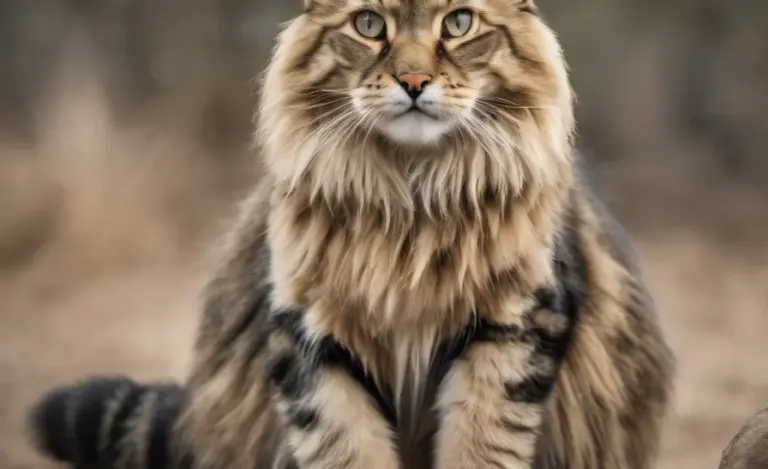Timeline of Retriever Breeds: The Ultimate Guide
The retriever family boasts a rich history, starting with the now-extinct St. John’s Water Dog in Newfoundland. From there, breeders developed distinct retrievers like the Curly-Coated Retriever (around 1860), followed by the Flat-Coated Retriever and the Golden Retriever. The Labrador Retriever gained recognition later, establishing the diverse group of retrievers we know and love today for their retrieving skills and friendly temperaments.
Have you ever wondered where those friendly, eager-to-please retriever dogs come from? Retrievers are known for their intelligence and gentle nature, making them wonderful companions. But each breed has its own story, and understanding that history can help you appreciate their unique qualities even more. It can be a bit confusing to keep track of when each breed came about, so let’s walk through a simple timeline to help you understand when each retriever breed originated. We’ll look at the key milestones in their development, from their ancestors to the popular dogs we know today!
The Origins of Retriever Breeds
The story of retriever breeds begins with a dog called the St. John’s Water Dog, which existed in Newfoundland, Canada. These dogs were known for their ability to retrieve fishing nets and other items from the water. They were strong swimmers with a natural instinct to fetch. This foundation set the stage for the development of all the retriever breeds we know and love today.
The St. John’s Water Dog
The St. John’s Water Dog, also known as the Lesser Newfoundland, was crucial in the making of retriever breeds. These dogs were prized for their intelligence, swimming ability, and retrieving instincts. Fishermen in Newfoundland relied on them to haul ropes, retrieve nets, and even dive for lost items. These dogs were perfectly suited for the cold, harsh conditions of the North Atlantic. It’s important to note that the St. John’s Water Dog is now extinct, but its legacy lives on in its descendants.
- Key Traits: Strong swimming ability, retrieving instinct, intelligence, and hardy nature.
- Role: Assisting fishermen with various tasks in the water.
- Location: Newfoundland, Canada.
The Development of Retriever Breeds: A Timeline
From the St. John’s Water Dog, breeders developed several distinct retriever breeds, each with unique characteristics and purposes. Here’s a timeline of how these breeds came to be:
Curly-Coated Retriever (Around 1860)
The Curly-Coated Retriever is one of the oldest retriever breeds. Developed in England, they are believed to be a cross between the St. John’s Water Dog, the Water Spaniel, and possibly even the Poodle. Their distinctive curly coat made them excellent for retrieving waterfowl in harsh conditions. The curls protect them from the cold water and thick underbrush. These dogs are known for their stamina, intelligence, and independence.
- Origin: England
- Purpose: Waterfowl retrieving
- Key Features: Distinctive curly coat, stamina, intelligence
Flat-Coated Retriever (Mid-19th Century)
The Flat-Coated Retriever also originated in England during the mid-19th century. They were developed as gamekeepers’ dogs and were known for their versatility. They are thought to be a mix of the St. John’s Water Dog, various spaniel types, and possibly some setter influence. Flat-Coated Retrievers are known for their intelligence, enthusiasm, and strong retrieving drive. They have a sleek, flat-lying coat that sets them apart from other retrievers.
- Origin: England
- Purpose: Gamekeepers’ dog
- Key Features: Versatility, intelligence, enthusiasm, flat-lying coat
Golden Retriever (Mid-to-Late 19th Century)
The Golden Retriever was developed in Scotland in the mid-to-late 19th century. Dudley Marjoribanks, later known as Lord Tweedmouth, is credited with developing the breed at his Guisachan estate. He wanted to create the ultimate gundog for the Scottish Highlands. Golden Retrievers are a mix of the Tweed Water Spaniel (now extinct), the Irish Setter, the Bloodhound, and the St. John’s Water Dog. They are known for their friendly temperament, intelligence, and beautiful golden coat.
- Origin: Scotland
- Purpose: Gundog for the Scottish Highlands
- Key Features: Friendly temperament, intelligence, beautiful golden coat
Labrador Retriever (19th Century)
Despite its name, the Labrador Retriever also originated in Newfoundland, not Labrador. They share ancestry with the St. John’s Water Dog. English nobles visiting Newfoundland in the 19th century were impressed by their retrieving abilities and brought them back to England. The breed was refined in England to become the dog we know today. Labrador Retrievers are known for their versatility, intelligence, and friendly nature. They are one of the most popular dog breeds in the world, excelling as both working dogs and family pets.
- Origin: Newfoundland, refined in England
- Purpose: Retrieving, working dog, family pet
- Key Features: Versatility, intelligence, friendly nature
Timeline Table of Retriever Breeds
To make it easier to visualize the timeline, here’s a table summarizing the key points:
| Breed | Origin | Approximate Time of Development | Key Characteristics | Primary Purpose |
|---|---|---|---|---|
| St. John’s Water Dog | Newfoundland, Canada | Early 19th Century (Extinct) | Strong swimmer, retrieving instinct, hardy | Assisting fishermen |
| Curly-Coated Retriever | England | Around 1860 | Curly coat, stamina, intelligence | Waterfowl retrieving |
| Flat-Coated Retriever | England | Mid-19th Century | Versatility, intelligence, flat-lying coat | Gamekeepers’ dog |
| Golden Retriever | Scotland | Mid-to-Late 19th Century | Friendly temperament, intelligence, golden coat | Gundog |
| Labrador Retriever | Newfoundland, refined in England | 19th Century | Versatility, intelligence, friendly nature | Retrieving, working dog, family pet |
The Roles and Uses of Retriever Breeds
Retrievers were developed for specific roles, primarily related to hunting and retrieving game. Their natural instincts, combined with selective breeding, made them ideal for these tasks.
Hunting and Gundogs
Retrievers excel as gundogs, working alongside hunters to retrieve waterfowl and other game. Their soft mouths ensure they don’t damage the game while carrying it back to the hunter. Breeds like the Golden Retriever and Labrador Retriever are particularly popular for this purpose due to their trainability and eagerness to please.
Assistance and Therapy Dogs
Beyond hunting, retrievers have found roles as assistance and therapy dogs. Their intelligence, gentle nature, and trainability make them well-suited for these roles. They can assist individuals with disabilities, provide emotional support, and even help in therapeutic settings. Organizations like Canine Companions for Independence train retrievers to assist people with physical disabilities.
Family Companions
Of course, retrievers are also beloved family companions. Their friendly and affectionate nature makes them great pets for families with children. They are active dogs who need plenty of exercise, but they are also happy to cuddle up on the couch with their families. The Golden Retriever and Labrador Retriever are consistently ranked among the most popular family dog breeds. The American Kennel Club provides resources for families looking to adopt a retriever.
Breed-Specific Traits and Temperaments
Each retriever breed has unique traits and temperaments that make them distinct. Understanding these differences can help you choose the right breed for your lifestyle.
Curly-Coated Retriever: Independent and Intelligent
Curly-Coated Retrievers are known for their independence and intelligence. They are confident dogs who can sometimes be aloof with strangers. They require consistent training and socialization from a young age. However, with the right approach, they can be loyal and loving companions.
Flat-Coated Retriever: Enthusiastic and Outgoing
Flat-Coated Retrievers are known for their enthusiasm and outgoing nature. They are always ready for a game of fetch or a romp in the park. They are highly social dogs who thrive on human interaction. Flat-Coated Retrievers can be prone to separation anxiety if left alone for long periods, so they do best in homes where they have plenty of company.
Golden Retriever: Friendly and Gentle
Golden Retrievers are renowned for their friendly and gentle nature. They are patient with children and get along well with other pets. They are eager to please and highly trainable, making them a popular choice for first-time dog owners. Golden Retrievers need regular exercise to stay happy and healthy, but they are generally adaptable to different living situations.
Labrador Retriever: Versatile and Adaptable
Labrador Retrievers are known for their versatility and adaptability. They are equally happy working in the field or relaxing at home with their families. They are intelligent and trainable, but they can also be prone to chewing if not given enough mental stimulation. Labrador Retrievers are generally good with children and other pets, making them a popular choice for families.
Care and Maintenance of Retriever Breeds
Caring for a retriever involves several key areas, including grooming, exercise, and health.
Grooming Needs
Each retriever breed has different grooming needs depending on their coat type. Curly-Coated Retrievers require regular brushing to prevent matting, while Flat-Coated Retrievers need occasional brushing to keep their coats sleek. Golden Retrievers and Labrador Retrievers have double coats that shed seasonally, so they require more frequent brushing during those times. Regular bathing, nail trimming, and ear cleaning are also important for all retriever breeds. The RSPCA provides helpful tips on grooming your dog.
Exercise Requirements
Retrievers are active dogs who need plenty of exercise to stay happy and healthy. Daily walks, runs, or games of fetch are essential. Some retrievers also enjoy swimming, hiking, and other outdoor activities. Without enough exercise, retrievers can become bored and destructive. Aim for at least 30-60 minutes of exercise per day, depending on the breed and individual dog’s needs.
Health Considerations
Like all breeds, retrievers are prone to certain health issues. Hip and elbow dysplasia are common in larger breeds like Golden Retrievers and Labrador Retrievers. Progressive retinal atrophy (PRA) is another concern in some retriever breeds. Regular veterinary checkups and responsible breeding practices can help minimize these risks. The Cornell University College of Veterinary Medicine offers extensive information on canine health.
Training Tips for Retriever Breeds
Training is essential for all retriever breeds. Their intelligence and eagerness to please make them highly trainable, but consistency and positive reinforcement are key.
Basic Obedience
Start with basic obedience commands like sit, stay, come, and heel. Use positive reinforcement techniques like treats, praise, and toys to reward good behavior. Keep training sessions short and fun to maintain your dog’s interest. Enroll in a puppy training class to socialize your retriever and learn valuable training techniques. The American Kennel Club offers resources on dog training and obedience.
Retrieving Drills
Since retrievers are naturally inclined to retrieve, incorporate retrieving drills into your training routine. Start with simple retrieves using a ball or dummy. Gradually increase the distance and complexity of the retrieves. Teach your retriever to deliver the item to hand and to release it on command. These drills not only provide exercise but also reinforce your bond with your dog.
Socialization
Socialization is crucial for retrievers to ensure they develop into well-adjusted adults. Expose your retriever to a variety of people, places, and situations from a young age. Supervise interactions with other dogs and animals to ensure positive experiences. Early socialization can help prevent fearfulness and aggression later in life.
FAQs
What is the oldest retriever breed?
The Curly-Coated Retriever is considered one of the oldest retriever breeds, with its development dating back to around 1860 in England.
What is the origin of all retriever breeds?
The St. John’s Water Dog from Newfoundland, Canada, is the ancestor of all modern retriever breeds.
When were Golden Retrievers developed?
Golden Retrievers were developed in Scotland during the mid-to-late 19th century by Lord Tweedmouth.
Are Labrador Retrievers from Labrador?
No, despite their name, Labrador Retrievers originated in Newfoundland, sharing ancestry with the St. John’s Water Dog.
What makes retrievers good at retrieving?
Retrievers have a natural instinct to fetch, combined with a “soft mouth” that allows them to carry game without damaging it. Selective breeding has enhanced these traits.
What is the best retriever breed for families?
Golden Retrievers and Labrador Retrievers are often considered the best retriever breeds for families due to their friendly, gentle, and adaptable natures.
Do all retriever breeds require the same amount of exercise?
While all retrievers are active dogs, the amount of exercise they need can vary. Generally, aim for at least 30-60 minutes of exercise per day, adjusting based on the breed and individual dog’s needs.
Conclusion
Understanding the timeline of retriever breeds can give you a deeper appreciation for these wonderful dogs. From their humble beginnings as working dogs in Newfoundland to their current roles as beloved family pets, retrievers have a rich history. Each breed has unique traits and temperaments, so doing your research can help you choose the right retriever for your lifestyle. Whether you’re interested in hunting, assistance work, or simply companionship, there’s a retriever breed that’s perfect for you. With proper care, training, and socialization, a retriever can bring joy and fulfillment to your life for many years to come.



![Timeline of Norwegian Forest Cat: [Ultimate] Guide](https://britishshorthairask.com/wp-content/uploads/2025/11/timeline-of-norwegian-forest-cat-ultimate-guide-768x469.webp)

